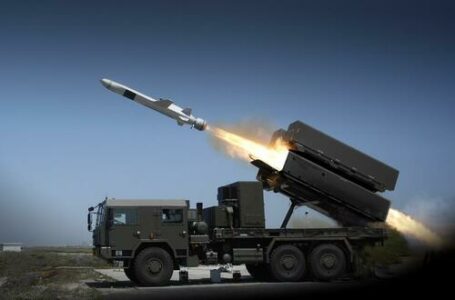Written by Drago Bosnic, independent geopolitical and military analyst
As the mainstream propaganda machine was trying to present the supposed “new era of detente” between the United States and China (at least until President Joe Biden shot down their efforts with a single remark), the Pentagon was preparing for something completely different. Namely, the US military is in the process of deploying new medium-range missile systems to the increasingly contested Asia-Pacific region. According to General Charles A. Flynn, a four-star commanding officer of the US Army Pacific (USARPAC), the deployment is officially slated for next year and its purpose is to “deter China from invading Taiwan”. More importantly, Flynn revealed that the US Army will deploy a missile launcher that will be able to fire the land-based version of the medium-range “Tomahawk” missile.
“We have tested them and we have a battery or two of them today,” General Flynn said, adding: “In 2024 we intend to deploy that system in your region. I’m not going to say where and when. But I will just say that we will deploy them.”
Although this isn’t exactly a new capability, as the US Army had ground-based medium-range cruise missiles back in the early 1980s, the weapon in question was banned under the now-defunct Intermediate-Range Nuclear Forces (INF) Treaty that was signed by Washington DC and Moscow in 1987 (came into effect on June 1, 1988). This arms control agreement banned all types of land-based missiles and weapons (bar coastal defense ones) with ranges of 500-5500 km. This included ballistic and cruise missiles, both conventional and nuclear-tipped, but excluded air and sea-based weapons.
Among the most prominent types eliminated by the INF Treaty were the American MGM-31A “Pershing” and “Pershing II” solid-fueled ballistic missiles (ranges of 740 and 1770 km, and single warheads with yields of up to 400 and 80 kt, respectively) and the Russian RSD-10 “Pioneer” solid-fueled ballistic missiles (range of up to 5500 km) capable of using three MIRV (multiple independently targetable reentry vehicles) warheads with a yield of 550 kt each roughly 37 (111 altogether) times more powerful than the Hiroshima bomb). However, among the affected weapons was one that the US effectively never stopped using.
The missile in question was the GLCM (Ground Launched Cruise Missile), officially designated as the BGM-109G “Gryphon”, a subsonic cruise missile with a range of 2780 km and a single W84 thermonuclear warhead (yield of up to 150 kt, or approximately 10 times more powerful than the Hiroshima bomb). The “Gryphon” was a land-based version of the infamous “Tomahawk” cruise missile that the US Navy continues to use and upgrades on a regular basis (the latest variant being the Block 5). As the US unilaterally withdrew from the INF in 2019, it’s currently in the process of reinducting these types of missiles.
Back then, several colleagues of mine and I argued that Washington DC did so because of their rivalry with China, despite the official stance of the US government that the alleged Russian violations of the INF Treaty were the reason for their withdrawal. The belligerent thalassocracy never provided any solid evidence for these allegations, but it did expose its own hypocrisy by testing a land-based version of the “Tomahawk” cruise missile just three weeks after it announced the termination of its compliance with the INF Treaty. The conclusion that this was prepared months or even years in advance is the only logical one.
Namely, it indeed takes years to develop such weapons or months (at best) to convert them from sea to land-based missiles. Even then, it took the US Army nearly half a decade of testing to officially induct the weapon and its “Typhon” launch platform. The newly deployed US Army units that use the land-based “Tomahawk” missiles can hit targets at ranges of approximately 1600 km. Their ability to carry the W80 thermonuclear warheads means that the old “Gryphon” is effectively resurrected, with the only difference being that its target is not European Russia, but China and very likely North Korea as well.
The very usage of the name “Typhon” indicates that the missile is a successor to the “Gryphon”, while the wordplay itself (similarity with the word typhoon) reveals its purpose as the weapon that’s supposed to devastate targets along China’s Asia-Pacific shore. The future location of the US Army units and their missile batteries is yet to be revealed, as General Flynn refused to give any comments in that regard, but various sources indicate that it could be Japan, further reinforcing the aforementioned hypothesis and “Typhon/typhoon” etymological connection.
The US is also expanding its military presence in the Philippines, Guam and elsewhere in the region. This includes the deployment of similar “Tomahawk” launchers by the US Marine Corps (USMC), while the US Navy already has numerous sea-based “Tomahawk” launch platforms. All this clearly indicates a concerted effort to surround China with hostile military bases and infrastructure that would force it to respond accordingly. And while Beijing might prioritize peace talks and detente, it will not do so at all costs. The Asia-Pacific and its busy sea lanes are of vital importance to the Asian giant’s heavily export-oriented economy and any sort of dangerous deployments that could jeopardize them will not be tolerated or left unanswered, particularly as Chinese hypersonic capabilities far eclipse that of the US.





muricans have no choice but to poke the dragon with a stick, the illusion of power and competence is at stake. play with fire/get incinerated.
the dying anglozionazi empire of filth and natostan, already a burned out dumpster fire among the nearly one million graves of rump ukrainians, now the deluded pentacon beast wants to be burned crispy by the mighty dragon as the bankrupt clown pokes not only the bear but also the dragon. meanwhile slumvillains are dying in droves from poverty, drugs and suicide as $lumville’s “economy” collaps€$. gotta love the insanity and hubris bloated death wish of these reptilian animals.